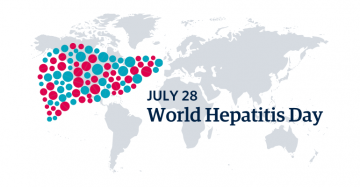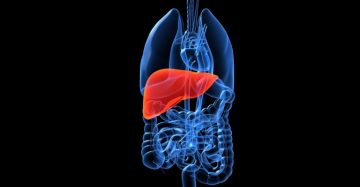By Dr. Sarah McCorquodale on June 17, 2024
Having evidence that remission of type 2 diabetes is possible through weight loss in select people, I have changed my approach to prevention and management of type 2 diabetes.
By Dr. Paxton Bach on March 12, 2024
The new Canadian guideline situates alcohol-related harms along a continuum, recognizing that negative health and social consequences of alcohol can arise even at rates previously consistent with low risk.
By Drs. Domnick Manhas and Tony Wan on August 23, 2023
It is estimated that 15% of all cancer patients will develop VTE, resulting in significant morbidity and mortality. The cost of cancer-associated thrombosis is substantial to the healthcare system. Currently, routine thromboprophylaxis is not recommended given the fear of increased risk of bleeding, modest absolute risk reduction in VTE, and inconvenience. However, a selected group of cancer patients with very high VTE risk will benefit from thromboprophylaxis.
By Hans Haag and Dr. Ricky Turgeon on July 5, 2023
Heart failure is the third leading cause of hospitalization in Canada and leads to readmission in 1 in 5 patients within 30 days after discharge. Iron deficiency (with or without anemia) is an important comorbidity in patients with HF and is associated with worse outcomes. Assess iron deficiency for all patients with HFrEF and HFmrEF admitted for acute HF.
By Drs. Clara Lu and Renée Janssen on March 7, 2023
Since the publication of the 2020 ATS Clinical Practice Guideline on pharmacologic treatment in tobacco-dependent adults, I now explain the goals of pharmacotherapy for tobacco use disorder in terms of reducing the compulsion to smoke and increasing readiness to quit, rather than abstinence alone. If patients are open to the conversation, I will discuss and offer all pharmacotherapy options — but emphasize the efficacy and safety of varenicline as my preferred first-line agent.
By Drs. Mel Krajden and Jim Gray on July 28, 2022
WHO observes July 28th as World Hepatitis Day and aims to eliminate Hepatitis B and C by 2030. The Pan-Canadian Sexually Transmitted and Blood-Borne Infections (STBBI) Framework for Action released in 2018 echoes this goal and calls for 80% of eligible people in Canada to receive hepatitis C treatment by 2030. In order to achieve these goals by 2030, high rates of testing and diagnosis are essential. New HCV therapies are well tolerated, require 8–12 weeks of treatment, are publicly funded in BC, and have cure rates of about 95%.
By Drs. Val Stoynova and Celia Culley on June 28, 2022
I have changed my practice to optimize patient care and planetary health by considering the climate impact of my prescribing choices while continuing to provide high-quality, evidence-based, lower cost, patient-centred asthma care.
By Drs. J Marie Kim and William Connors on June 15, 2022
Skin and soft tissue infections (SSTIs) are exceedingly common and account for up to 10% of all hospital admissions in Western countries. The most common SSTIs, cellulitis, refers to diffuse, superficial, spreading skin infections, often with significant inflammation of lymphatic vessels. Cellulitis can frequently recur and studies have shown that up to 29% of admissions with cellulitis were due to repeat episodes. Prophylactic therapies and mitigating of risk factors have been recently shown to reduce recurrence. The focus of this article is the prevention of recurrent, lower-extremity, nonpurulent cellulitis that is not associated with major penetrating trauma, preceding leg ulceration, or surgery.
By Dr. Katarina Wind on May 3, 2022
Medical school taught me that “obesity” is a cause of morbidity and mortality, and that weight loss is its cure. I recorded patients’ BMIs and counselled them on weight-loss strategies, believing that I was helping them.
By Drs. Shirley Jiang and Hin Hin Ko on March 9, 2022
While liver biopsy is crucial in determining the stage of liver fibrosis in chronic liver disease, it is not the most accessible or appropriate test in most general practice settings. Non-invasive tests (NITs) for liver fibrosis, on the other hand, are more widely available and applicable to different liver conditions. NITs can be a useful tool in general practice to stratify high-risk patients who may require further investigations and referral to specialist care.
By Drs. Alejandro Dau, Agnes Lee, and Tony Wan on February 22, 2022
COVID-19 is associated with an increased risk of venous, arterial, and microvascular thrombosis. Early reports documented high rates of venous thromboembolism (VTE) in hospitalized patients with COVID-19, with pooled incidences of 20-30%, despite standard-dose thromboprophylaxis. Multiple randomized control trials (RCTs) have sought to determine the safety and efficacy of therapeutic anticoagulation in both critically ill and non-critically ill hospitalized patients with COVID-19.
By Drs. Taylor Drury, Poupak Rahmani, and Tony Wan on January 26, 2022
We continue to use full dose therapeutic low molecular weight heparin (LMWH) for bridging in the pre-operative period. However, we now use post-operative prophylactic LMWH as an alternative bridging strategy in patients undergoing high-risk bleeding procedures. In patients at high risk of thromboembolism (including mechanical mitral valve and atrial fibrillation) undergoing a high-risk bleeding procedure, we are now less aggressive in resuming full dose therapeutic anticoagulation, as we feel comfortable using prophylactic LMWH for up to several days post-operatively before resuming therapeutic anticoagulation.
By Gerri Klein on January 12, 2022
For all my patients who are on hypoglycemic medications, oral or injectable, I suggest using rtCGM or isCGM. Even intermittent use or a short trial of 10 days to two weeks with either of these devices can be enlightening for patients. With the ongoing COVID restrictions, many of my patients have been unable (or unwilling) to obtain an A1C from a lab test. In my practice, I have found it helpful to use glucose TIR to assess glucose control as an adjunct measure to A1C results; when an A1C is not available; and to guide treatment recommendations.
By Drs. Elina Liu, Erin Morley, and Anna Rahmani on November 15, 2021
Each year, 1 in 6 patients with atrial fibrillation, or an estimated 6 million patients worldwide, will require perioperative anticoagulant management. An increasing number of atrial fibrillation patients are using direct oral anticoagulants (DOACs) in place of warfarin for stroke prevention. However, there has been uncertainty regarding perioperative management of DOACs, with significant variability noted in clinical practice. This can lead to potential harm with an increased risk of thrombosis if a DOAC is held for too long versus increased risk of post-operative bleeding if interruption intervals are too short.
By Shirley Jiang, Edward Tam, and Hin Hin Ko on August 4, 2021
Primary biliary cholangitis (PBC) is the most common autoimmune liver disease with an incidence of 1 in 1000 in women over age 40. For decades, the only evidence-based treatment was ursodeoxycholic acid. Unfortunately, the rate of inadequate response to UDCA is up to 40%. In 2017, Health Canada approved the use of obeticholic acid (OCA) for the treatment of PBC. UDCA remains first-line therapy for PBC with a long record of use and generic preparations but in non-responders, OCA treatment should be considered.
By Drs. Raymond Mak and Tiffany Wong on January 27, 2021
Between 5% to 10% of the population reports an allergy to penicillin. After careful assessment, over 90% of these individuals are found to carry a false allergy label. Having a penicillin allergy label carries many potential harms, including prolonged hospital stays, increased patient costs, risk of more side effects, and an increase in resistant organisms. As such, penicillin allergy has become a major public health concern.
By Azin Ahrari, Neda Amiri, Mohammad Bardi, Natasha Dehghan on September 16, 2020
Giant cell arteritis (GCA) is the most common vasculitis in adults above 50 years of age. GCA is a rheumatological emergency. Rapid diagnosis and treatment are required to reduce the risk of complications.
By Omid Kiamanesh, MD, FRCPC on August 26, 2020
Despite intensive lowering of LDL-C using lipid-modifying therapy, residual ASCVD risk persists, particularly in those with hypertriglyceridemia. Icosapent ethyl has been shown to reduce residual ASCVD risk and cardiovascular death in select patients with hypertriglyceridemia while on statin therapy.
By Drs. Lawrence Chow and Rose Hatala on May 6, 2020
In the era of the COVID-19 pandemic, our most vulnerable patients (the elderly and those with chronic illnesses) are disproportionately at the highest risk of mortality. In this difficult and chaotic time, it’s more important than ever that we maintain a humanistic approach to care. This involves keeping the patient, and their values and preferences, front and center in our care.
By Dr. Alice S Chang, Dr. Michael J Diamant, Dr. Margot K Davis, and Dr. Krishnan Ramanathan on October 30, 2019
Cardiac amyloidosis (CA) is an infiltrative disease that is being increasingly identified in those with HFpEF. Amyloidosis is a group of heterogeneous disorders characterized by the deposition of misfolded protein that aggregates into fibrils, affecting multiple organs including the heart, neural tissues, kidneys, and the gastrointestinal tract.
By Dr. Janet Simons on June 26, 2019
Formulae to adjust total calcium for the albumin concentration should be abandoned. The use of these formulae overestimates ionized calcium in patients with hypoalbuminemia, causing false negatives for hypocalcemia and false positives for hypercalcemia. Measurement of ionized calcium is now relatively inexpensive and is available in most hospitals and many outpatient settings.
By Drs. Terence Yung and Steve Ham on December 5, 2018
All postoperative troponin elevation should be treated seriously. Troponin elevation after surgery is associated with significant mortality at 30 days. Myocardial injury after non-cardiac surgery (MINS) diagnosis is made after other causes of troponin elevation are ruled out. Up to 90% of patients with a troponin elevation postoperatively do not exhibit any symptoms, yet their outcomes are still poor.
By Drs. Terence Yung and Tony Wan on July 24, 2018
For those who had an elective hip or knee arthroplasty who have no other risk factors for VTE, after initial 5 days of DVT prophylaxis with rivaroxaban 10mg a day, I complete the remaining DVT prophylaxis with aspirin 81mg once daily for an additional 30 days for hip arthroplasty and 9 days for knee arthroplasty. Those who already were on once-daily 81mg aspirin prior to surgery will receive 162mg aspirin once daily instead in this period.
By Drs. Christopher Cheung and Kenneth Gin on August 9, 2017
Perioperative management of anticoagulation is challenging as physicians must consider the risks of stroke, systemic embolism, and perioperative bleeding.
By Dr. Gordon Francis on April 26, 2017
High Lp(a) is a major CVD risk factor that should be measured and acted upon in patients and families where there is history of premature CV events but lack of clear risk factors, and in patients with known CVD and recurrent events despite treatment to LDL-C target.
By Drs. Charlie Chen and Hayden Rubensohn on April 12, 2017
What is the patient willing to consent to as treatment if his/her condition were to seriously deteriorate? The Serious Illness Conversation Guide developed by Ariadne Labs provides a framework for physicians to engage in care planning with patients in a manner acceptable to the patient.
By Drs. Terence Yung and Erin Morley on March 22, 2017
Physicians who see patients for preoperative assessment often face the dilemma of accurately determining a patients’ cardiac risk. Patients may have limited mobility and thus do not necessarily elicit cardiac symptoms even if there is significant flow-limiting coronary artery disease.
By Dr. Ric Arseneau on February 8, 2017
The PLEASE trial (Persistent Lyme Empiric Antibiotic Study Europe) was published in the New England Journal of Medicine in March 2016. This randomized, double-blind, placebo-controlled study assessed whether longer-term antibiotic treatment of persistent symptoms attributed to Lyme disease leads to better outcomes than does shorter-term treatment.

















Recent Comments